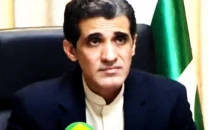IMF sees further uptick in Pakistan’s inflation
Inflation expected at 24.8% for fiscal year, approximately 1% above previous forecast

The International Monetary Fund (IMF) has kept Pakistan’s economic growth forecast unchanged at 2% but increased the inflation projection to nearly 25% for this fiscal year. This adjustment comes as the country undergoes another round of increases in utility and fuel prices.
In its World Economic Outlook report released on the sidelines of the spring meetings, the global lender also revised the current account deficit downward to 1.1% of gross domestic product (GDP) or below $4 billion.
The projection is still about $1.5 billion higher than Pakistan’s estimates.
The IMF has also upward revised the inflation forecast for the next fiscal year 2024-25 but did not change the economic growth projection.
The IMF report showed that during the current fiscal year, Pakistan’s economy may grow at a rate of 2%, a forecast that is consistent with the IMF’s first review report under the $3 billion standby arrangement. The forecast is also in line with the projections made by the World Bank and the Asian Development Bank that showed estimates little below 2%.
During the second quarter of this fiscal year, Pakistan’s economy grew by just 1% due to continued restrictions on imports, tight monetary policy and increasing cost of doing business that is taking goods out of the reach of the majority of the people.
The Pakistan Bureau of Statistics reported on Tuesday that the large-scale manufacturing sector contracted 0.51% during the July- February period of this fiscal year when compared with the same period of last year.
This suggests that the economic growth rate in the third quarter may also remain subdued, barring better output in the agriculture sector.
The IMF report indicates that inflation for this fiscal year may persist at 24.8%, approximately 1% higher than its forecast from four months ago. This adjustment comes as the PBS reported a slowdown in the inflation rate to 20.7% in March.
The central bank did not reduce the interest rate in its last meeting despite there being significant room for reduction.
The federal government on Monday increased the petrol price by Rs4.53 per litre, which was far higher than the Rs1.73 per litre increase in the average Platts prices. There is a need to investigate the Ministry of Finance for fleecing consumers who are now forced to pay the Rs294 per litre price.
The ministry also passed on a Rs1.34 per litre exchange rate adjustment despite the rupee remaining stable during the past two weeks. The Ministry of Finance also unnecessarily increased the inland freight equalisation margin (IFEM) from Rs5.30 per litre to Rs6.75 per litre –putting an additional Rs1.45 per litre burden on the consumers. The IFEM is Rs3.71 per litre for high-speed diesel.
In a press statement, the Ministry of Finance claimed that during the last 15 days, the price of gasoline in the world market increased by $3.82 per barrel. Similarly, the price of high-speed diesel increased by $4.30 per barrel, the ministry spokesperson said.
The spokesman stated that OGRA has proposed to increase the price of petrol by Rs4.53 per litre and the price of high-speed diesel by Rs8.14.
Another round of increases in the prices of gas and electricity is also around the corner, which would further stoke inflation. The prime minister also on Monday gave a go-ahead to implement the gas prices, based on the average of the local and imported gas. This would increase the prices by about 41%.
The IMF report further stated that during the next fiscal year, Pakistan’s economy may grow by 3.5%. It added that inflation could stay around 12.7%, which is 1% higher than its previous forecast.
The IMF released the report a day before Pakistan’s Finance Minister Muhammad Aurangzeb is scheduled to meet with the Managing Director of the IMF to secure another bailout package.
In an interview with the AFP in Washington, the finance minister said that Pakistan has initiated discussions with the IMF over a new multi-billion-dollar loan agreement to support its economic reform programme. The news agency cited Aurangzeb as saying that Pakistan initiated the discussion with the Fund to get into a larger and extended programme.
An IMF spokesperson told AFP that the Fund is “currently focused on the completion of the current Stand-by Agreement programme”.
A finance ministry official said that the IMF Executive board meeting date to approve the last loan tranche of $1.1 billion would be decided in a couple of days by the global lender. He said that the meeting will be held before the end of April.
The World Economic Outlook report stated that global growth is estimated at 3.2% in 2023 and is projected to continue at the same pace in 2024 and 2025. The projection for 2024 is revised up by 0.1 percentage point from the January 2024 report and by 0.3 percentage point with respect to the October 2023 WEO forecast.
The IMF has cut Pakistan’s current account deficit projection from 1.5% of the GDP to 1.1% for this fiscal year. This brings down the deficit to below $4 billion but it is still far higher than the Ministry of Finance’s estimates of a $2.5 billion deficit.
For the next fiscal year, the IMF has projected the current account deficit at 1.2% of the GDP, according to the report. The next fiscal year’s current account deficit projections are critical in assessing the country’s total external financing needs, including the requirements for loan repayments.


















COMMENTS
Comments are moderated and generally will be posted if they are on-topic and not abusive.
For more information, please see our Comments FAQ